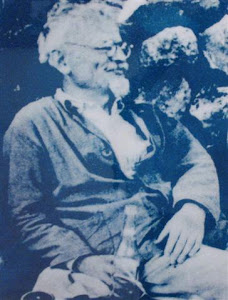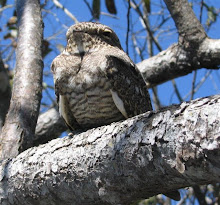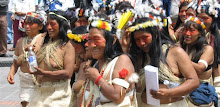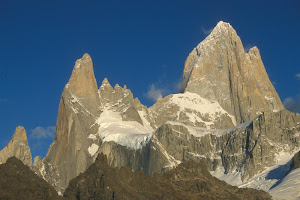Thanks to KMUD stalwart and jazz and salsa horn player Jimmy Durshlag, I am starting to do a monthly set of the weekly KMUD show of Latino América Sonando. Yesterday I did the show and also got in a quick and informative interview with colleague Aaron Sanger of International Rivers.
It was fun to share with the KMUD listeners a bit more information about our work to protect rivers in Patagonia!
As an aside, a month ago I did an interview with my friend Burke Stansbury, who is the Executive Director of the Committee in Solidarity with the People of El Salvador-CISPES. I aspire to bring a mix of news and good music to the two hour set when I get a chance to get behind the board en la radio comunitaria de los redwoods.
Though the show is only archived for about 15 days, you can go here and listen to the Latino América Sonando show I did yesterday. With a touch of patience and a few minutes wait for the finish of the previous program and the start of the show you will get a two hour south of the border music and news extravaganza--or something like that...Que lo disfruten!
Saturday, September 27, 2008
Saturday, August 30, 2008
Poder Floreciente Californiano
 California Flower Power
California Flower PowerThe summer in Alta California is moving right along, and before we know it we will be in full autumn mode. Work continues unabated, including an interesting restoration job I did in helping clean up loads of scrap metal off a parcel that will become part of the Humboldt Redwoods State Park. I have been making my living again as a garbage man for the earth.
In this day and age it is an extreme challenge to maintain the quiet rural rhythms that are so grounding for those of us living on the Lost Coast. Chop wood, carry water, these are the breathing tasks of living in the woods.
The drive for culture is incessant in this internet age. Keeping up on music for the occasional radio show becomes more than a hobby, it becomes a monumental production project. But who cares? Music is freedom. I have been to a few fantastic shows lately, seeing Radiohead play in Golden Gate Park down in The City, and recently catching Ozomatli again. Looking ahead I will catch Fishbone at the Mateel Community Center's Pipejam next weekend. Then there will of course be Earthdance, which will be the perfect party to bring the summer to a complete close.
Oh, and don't forget that I will be seeing Willie Nelson tomorrow!
Those are the spikes in social activity and artistic stimulation. The majority of my time is definitely dedicated to those down to earth chores that make country living so transcendental. Perhaps the big city is in my future again, but for now I relish the tranquility of the hills, and the power of the flowers.



 Patagonia Rivers Update
Patagonia Rivers UpdateThe companies have turned in the Environmental Impact Study for the construction of the 5 dams on the Pascua and Baker Rivers. A friend from Puerto Montt wrote an email about the two shipping containers worth of material that made up the copies of the EIS that were turned in officially. It is a bulky and unyeildy document, the kind designed to obfuscate and distract.
Interestingly, but not surprisingly, the 2000+ kilometers of transmissions lines are not included in the study, revealing the entire environmental review process in Chile (free trade partner with the USA!) to be asburd and scientifically untenable. Any ecologist knows that it is all about cumulative impacts, but once you consider those issues the proposal loses all charateristics of environmental responsibility. So such an analysis is avoided. Such is the nature of the politics of natural resource conservation--keep the legitimate science to a minimum, and the greed for profits at a maximum.
Nonetheless, even poor hidroAysén has conceded that getting approval for the project could take more than a year, and in the meantime the pressure heats up to get Home Depot to stop providing commercial cover in the USA for the dinosaurs in the Matte and Angelini groups that keep stumbling forward drunkenly with this irresponsible project. There is still quite a bit of work ahead of us, but protecting the wild rivers of Patagonia from massive hydro development is still an attainable vision.
Friday, July 11, 2008
Black Dahlia

Summer is here, in all it's over heated intensity. Not much has been happening on the Patagonia River Campaign front, and here at home I am holding down the rural living front, appreciating the living things all around me, such as the early blooming black dahlia in my yard.
I continue to volunteer at KMUD radio, and will do my Black Dahlia Manyhues Radio special tonight at midnight. Either listen live or check out the KMUD archives.
Material for tonights show includes pieces from the Sierra Nevada World Music Festival which, despite some rare and weird moments, was quite a cool weekend gig. Regardless, the best music of that weekend was the Seun Kuti gig I saw at the Mateel Community Center. A great show by a very interesting and articulate artist.
More than two months have passed since I posted anything at this blog. Just goes to show how exciting travel down to South America can be. Here at home I just try to work hard, be smart about water, and make sure everything is fire safe.
The occasional radio shift is a cool outlet. Otherwise, I am keeping a keen eye on the craziness of a world long off it's rocker.
In the meantime, Patagonia's rivers still run free. That is certainly a relief!
Sunday, April 20, 2008
Redwood Community Radio--KMUD Spring FunDrive

It has been a year since I started doing volunteer shifts at KMUD as an engineer and programmer, amongst other chores. I enjoy being involved with this grassroots media effort. You can listen to KMUD (Redwood Community Radio) on the internet at www.kmud.org or if you are local you can tune in on your very own radio!
Radio is a special medium that continues to be effective and relevant even as technology for global communications advances rapidly. We are working at KMUD to raise money for the next half year of operating. Please consider joining the 'mud as a member! Go to the KMUD website and give a listen and make a secure donation.
Hopefully, as well, as the broadcasting season goes on I will have some new and unique radio to be posting here on the vozsilvestre blog. Stay tuned!
Wednesday, April 9, 2008
Ríos Patagónicos In the Stateside News

I am barely a week back into the stateside scene and the results of our global community labor to protect wild rivers in Patagonia are being published in major daily newspapers in the United States, this just one week after the New York Times published their opinion piece against the possibility of damming the Baker and Pascua Rivers. This is what I like to see!! Some real momentum to protect Patagonia from needless industrialization.
On Sunday, Lonely Planet writer Carolyn McCarthy was published in the Boston Globe with her article Little Seen and Untamed River Stirs Patagonia. This is a very readable travel section article with an excellent and breathtaking finish. Carolyn does a great job of capturing the International Rivers campaign and the local perceptions of the dam proposals. She accompanied us on the International Rivers sponsored delegation--and we really wanted Carolyn to come on the hike but schedules did not permit it.
With all this great press and momentum for our campaign one might wonder how many more tricks we have up our sleeves--but we have only but started the campaign. This past Monday, to add punch to the campaign media strategy, our colleague Colin Barraclough had his article published in the San Francisco Chronicle. Chile Plans to Dam Patagonia Wilderness is the title, and the read is equally impactful. Of course, as the author of this blog and one of the organizers of the Pascua Expedition Project, I am not able to hide that Colin came with us on the hike. He was a key and important element to the good style, fun, and great safety that we maintained on our expedition. I am picturing Colin now, suffering in Buenos Aires (sufrimiento!!) and poetically reliving the journey as he word smithed his story together.
Ahhhh! Patagonia!
Tomanse un buen mate mis amigos!
By the way, the photos are by Colin, from our trip to explore the wild Pascua!!

Tuesday, April 1, 2008
New York Times Says NO to HidroAysén!
There are a few factual errors in the piece, but the New York Times has published an op-ed piece that says NO to the construction of mega-dams on the Pascua and Baker Rivers in the Chilean Patagonia.
Take a look at their opinion page to read their Patagonia Without Dams piece. This is worth a read, and worth distributing.
This is certainly quite an exciting development! My guess is that it is the movers and shakers at NRDC who were able to get the Times editorial board on to this issue. Great work!
Hopefully ENDESA and the Matte family can get the message now, before this campaign has to heat up much more! It is also time for Michelle Bachelet to show the world who is the president in Chile, and put an end to this monumental waste of time and energy that is the HidroAysén proposal to dam the Baker and Pascua rivers.
Take a look at their opinion page to read their Patagonia Without Dams piece. This is worth a read, and worth distributing.
This is certainly quite an exciting development! My guess is that it is the movers and shakers at NRDC who were able to get the Times editorial board on to this issue. Great work!
Hopefully ENDESA and the Matte family can get the message now, before this campaign has to heat up much more! It is also time for Michelle Bachelet to show the world who is the president in Chile, and put an end to this monumental waste of time and energy that is the HidroAysén proposal to dam the Baker and Pascua rivers.
Monday, March 17, 2008
Patagonia-Wild Refuge Under Attack

The International Rivers Patagonia Campaign has launched a new internet action to protest the HidroAysén proposal to dam the Baker and Pascua Rivers in the Aisén Region of the Chilean Patagonia. Go to this 3 minute slide show to get a glimpse into the campaign (and to see a few of my photos from the Pascua Expedition Project!). From the slide show you can link easily to the internet action. This is meant to be spread far and wide, so please do distribute.
For more information browse past vozsilvestre blogs just below, or follow the International Rivers link to the right.
As a sidenote, our famously small and well connected organization Ancient Forest International has recently joined the Consejo de Defensa de la Patagonia. It is an honor to be among dozens of other international and Chilean organizations working to protect the wild rivers of Patagonia.
Defendamos La Patagonia Carajo!
Wednesday, March 12, 2008
¡Viva Los Cedros!



El futuro de Los Cedros no está seguro!

Pero Los Cedros sigue siendo precioso!




¡Viva Los Cedros!
The rain was coming down hard, and it was one of those bus rides where the windows were so fogged up on the inside that it was impossible to see what was happening on the outside. Nonetheless, with the rain and the darkness of the fast approaching night, it may have been difficult to see anyhow. What is more, no hubo luz, there was no electricity in the small and desperate looking buildings. Perhaps than it is understandable that I missed the stop in Chontal and ended up traveling to the next stop on the new road along the Guayabamba River.
Ay, la gran p**a, me equivoqué! I should have gotten off in El Chontal, but the immense friendliness of the people in the northwest corner of Ecuador became immediately obvious. Getting off in Magdalena Baja (which twelve years ago was not even an actual town!) was made easy by a young local who showed me how to get to the Hormiga Verde and arrange lodging for the night. As well, I was actually better positioned to make the hike up to Los Cedros the following morning, using the well established mule trail that I had hiked so many times before. The road and electricity and phone were all new since my last visit twelve years ago, but some things had not changed that much just yet.
Twelve years! Twelve years come and gone. For all the traveling that I have done, and the many trips I have made back to places that I have worked and adventured, it is still remarkable when I return to a place that I have known intimately before. The Bosque Protector Los Cedros (previously the Reserva Biológica Los Cedros) is easily one of the most beautiful and inspiring forest landscapes that I have ever known. Twelve years ago, following the guidance and motivation of friends and colleagues, I ended up in Los Cedros working as an all-purpose volunteer. On that first trip to South America I spent the better part of 6 months up in Los Cedros, a protected forest area that borders the famous Cotacachi-Cayapas Ecological Reserve. Los Cedros is a classic private conservation initiative (that now enjoys a unique public-private partnership due to ongoing difficulties in securing land title) in the buffer zone of a globally important protected area. Birdlife International rates Los Cedros as one of the most important private conservation efforts in Ecuador. And finally, twelve years after my volunteer stint, I was returning to visit, pay tribute, and measure the changes to the reserve and the area.
If there is one thing that is certain, regardless of the slow pace at which change in the area around Los Cedros is occurring, it is that change is happening. The pressure is on all around Los Cedros, the pressure of illegal logging, the pressure of forest clearing for grazing and agricultural activity, and the looming pressure of large scale copper mining (see some of the coverage in Upside Down World for detailed accounts of the Ascendent Copper mine issue). Yet Los Cedros retains its wild essence, and continues to be a remote and spectacular ecotourism and rainforest conservation science destination.
Los Cedros will not always be as remote as it has been. The hike up to the reserve is famously grueling, with about a thousand meters of elevation to be gained on an often times extremely muddy and hammered livestock trail. Yet the road is being punched in to Magdalena Alta (the miracle in my mind is that twelve years later the road has not yet actually arrived to Magdalena Alta!) and there are more and more people living in the area, including potential squatters up some of the more difficult to reach drainages that pour out of the western extremes of the 6000 plus hectare protected forest. What is more, the threat of large-scale copper mining in the region is real, with untold potential negative impacts on forest and wildlife conservation in the area (without exploring potential social impacts).
I am fortunate to have had experience in Los Cedros. My time there previously was special, before the age of widespread Internet and cellular phones, and allowed me to develop an intimate relationship with the cloud forest and the submontane tropical rainforest that cloaks the steep and mountainous terrain of the Chocó region, the wettest and most diverse rainforest region in the Americas. I was once two months up in Los Cedros without coming down, one of my more extended periods in wild country, period. Such experiences are unique, and unrepeatable. Perhaps my brief visit now is tame in comparison, but I am thankful for having motivated to get back up to Los Cedros and reigniting my passion to support this project.
Speaking of supporting this project, there are three people that I want to thank here, for their dedication to Los Cedros and for their wonderful ability to instill in me a commitment to working for the long term care of this place and important conservation effort.
I want to thank Tim Metz for his long-term willingness to literally put his money where his mouth is. Tim is perhaps the single most important benefactor to the Los Cedros project, and I admire and appreciate his willingness to make Los Cedros a success.
Murray Cooper deserves appreciation for giving such an aesthetic touch in the development of the facilities at Los Cedros. Murray is probably the one person who put Los Cedros on the global tropical rainforest conservation map, and is the person who showed me the way to get there.
And last, but certainly not least, I want to give props to José DeCoux, the live-in guardian of Los Cedros, the man who got the whole project up and going. José is a madman, an expatriate rainforest dweller who has committed himself in profound terms to Los Cedros. His staying power and presence is what most has kept Los Cedros in the largely pristine state that the reserve still celebrates. It was great to make contact with José again during my visit, and I truly do aspire to contribute positively to the ongoing stewardship of this tremendous forest protection project.
¡Viva Los Cedros! It is our favorite forest protection project in the world! No one with an eye for wild country who makes the trip to Los Cedros can avoid falling in love with the place. My love for Los Cedros has been rekindled, and my amateur photos will only shine a weak light on why it is that we love Los Cedros so much. The birds, the flowers, the grandeur of the forest, the ability to drink of the freshest water in the Andes directly from the river, these are the qualities that we celebrate and that we continue to strive to preserve.
Feel free to join us in our efforts to make Los Cedros a continued success, contact me through this blog to support the legal defense fund and the infrastructure work that will allow Los Cedros is to achieve its goals in the next twelve years, just as the project has had so much success in the last twelve years. At the very least, if you are going to Ecuador make Los Cedros an essential stop on your visit. You will be glad you did.


Thursday, March 6, 2008
Todos Van al Oriente Para Trabajar








The infrastructure in Ecuador is chaotic. The roads, the water systems, the electrical systems, even phones and the internet, they all seem to be in terrible disrepair. Thus far I have not really had the time I would like to have to be online putting together full posts about my latest research and travel experiences. Soon I will present some thoughts on comparing Patagonia with Amazonía. The development issues are distinct, yet the similarities and the lessons abound. The Amazon is under serious stress, and it only demonstrates that Patagonia is still a remarkably intact region.
What might happen in Patagonia with hidroAysén is hinted at by oil development and unregulated colonization in the Amazon.
Though I have many ideas to share, for now I can only post some photos from my recent trip to the Shiripuno region of the Gran Yasuni, specifically the Territorio Étnico Huaorani.
Suffice it to say that if pictures are worth a thousand words, these current images of the Amazon should speak a great deal of how yes, human kind is wrecking havok on wild South America, even as the beauty still expresses itself wonderfully day after day.
More soon, after I return from our favorite project, la Reserva Biológica Los Cedros. First though some last images from the wild Amazon!



Subscribe to:
Posts (Atom)
.jpg)



.jpg)











.jpg)
.jpg)
.jpg)


